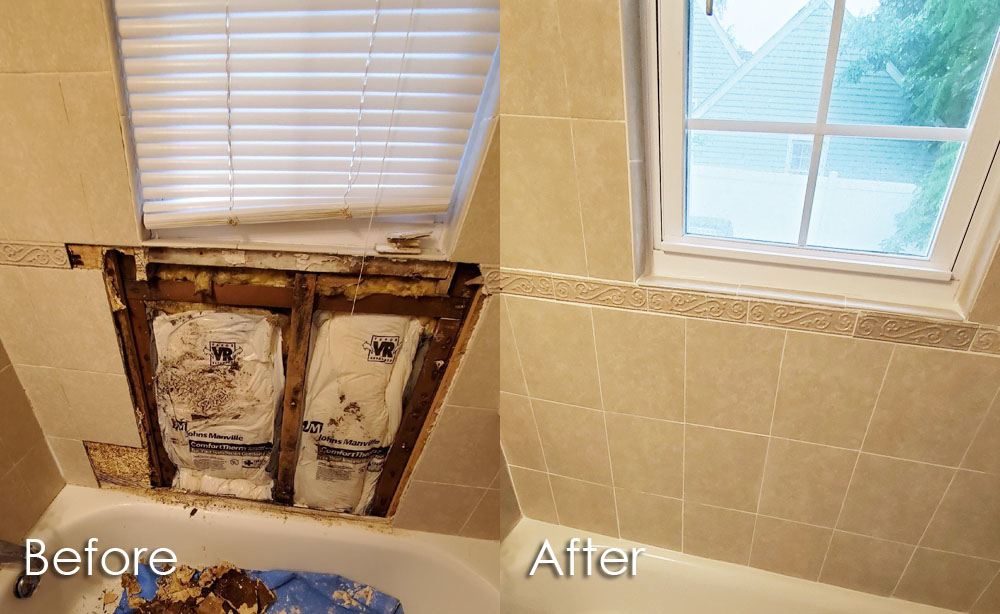What are your beliefs on How to Fix a Water Damage Bathroom?

The bathroom is very at risk for moist build-up and also potential water damage as a result of the frequent use of water in it. This post uses straightforward inspection techniques to assist identifying water damage risks.
The regular use water in the bathroom makes it incredibly prone for wet accumulation and also potential water damage. By examining it on a regular basis, you can reduce water related damages.
The complying with collection of examinations is very easy to execute and should be done when in every three months in order to keep your restroom healthy as well as to stop possible water problems brought on by the bathtub, the shower, pipe joints and plumbing, sinks, cabinets, and the bathroom
Do not disregard executing these examinations and also be thorough while performing them. Keep in mind that these easy evaluations can save you a lot of money by offering early indicators for water damage
Sinks and Cabinets
Sinks and closets are revealed to dampness and also moisture day-to-day and also are commonly forgotten. Check on a regular basis under the sink and also on the counter top over it. Fix any kind of drip in the catch as it might suggest drain problems. Look around the sink, slow draining pipelines might suggest a blocked drain. Replace sink seals if they are split or loosened.
Tub and Shower
The shower and bath tub call for unique interest and upkeep. Examine the ceramic tiles and change if fractured. Make sure that there is no missing cement between the tiles. Evaluate as well as replace cracked caulking at joints where the wall surfaces satisfy the floor or the bathtub. Obstructed drains and pipes problems will certainly stop the tub from drying and also may indicate significant issues below the bath tub. Talk to an expert immediately to avoid structural damages. Take note of discolorations or soft locations around the bathtub wall surfaces as they may indicate an inner leak.
Plumbing
Signs for water damages are difficult to detect given that most pipelines are installed inside the wall surfaces.
Pay special focus to flooring and wall surfaces moisture and also stains as they might suggest an unseen plumbing issue. Inspect moisture degrees in adjoining spaces as well.
The Bathroom
The toilet is a prone water junction. Inspect the water lines and look for leakages around the bathroom seat, in the tube, and also under the water tank. If you discover any indications of dampness on the floor around the commode, check for leakages in the toilet edge as well as container seals.
Understand that hanging commode bowl deodorants boosts the opportunities for clogs.
Water Damage Signs In The Bathroom To Avoid Cleanup
Musty smell
This is one of the easiest signs to catch because musty smells are so odorous. The damp, earthy, moldy smell should be a big red flag. The smell will develop when moisture gets trapped in surfaces, and begins to facilitate mold growth. Leaking pipes under cabinets, inside walls, and behind shower fixtures will cause moisture to stay trapped and not dry, which will lead to mold growth and spread. As soon as you notice any musty smells in your bathroom, have it checked for hidden water damage and cleanup signs.
Visible mold
If the smell isn’t there to give it away, sometimes you will actually see mold growth. Finding mold in your bathroom is a serious problem, because mold is very harmful to your health. By the time mold growth is visible, it also means that water damage has already occurred and been present for some time. The only way the mold problem can be resolved is to find the source of the moisture and get it stopped. To safely and adequately remove mold, you need to have professionals handle the remediation. Do not waste any time in getting mold problems addressed, fixed, and sanitized so that you can protect you and your family from the many respiratory symptoms caused by mold exposure.
Damaged floors
Bathroom floors should be able to withstand some exposure to water while still remaining in good condition. However, when excess exposure or water leaks occur, they will begin to damage even the most water-resistant flooring. If you notice any cracking, bubbling, staining, or warping on your bathroom floors, there is probably a water leak somewhere causing the distortion. If you notice areas of the floor have become softer, or even have a spongy feeling, there is probably damage to the subfloor. Subflooring is typically made up of plywood. When plywood is exposed to water or moisture, it will absorb it. Once it has become saturated, the weight of the excess water will cause the wood to swell and soften. Check the floors in your bathroom frequently to catch any of these sings before they lead to damaged subflooring.
Changes on walls
When water leaks behind walls, it will cause changes in the drywall. Peeling plaster, blistering paint, and soggy wallpaper are all good indicators that excess water is building up behind the wall. Water leaking behind drywall will cause it to swell and be soft to the tough. If you start to notice gaps along the trim of your walls, or where tile meets the wall, it could also be a strong indicator that there is a leak behind the wall. Any changes, distortion, or damage on the walls should be evaluated as soon as you notice it to prevent further water damage and cleanup.

I stumbled upon that blog posting on Common Causes of Water Damage in a Bathroom while perusing the web. Loved our content? Please share it. Help someone else discover it. I love reading our article about How to Repair and Prevent Bathroom Water Damage.
Get Offer